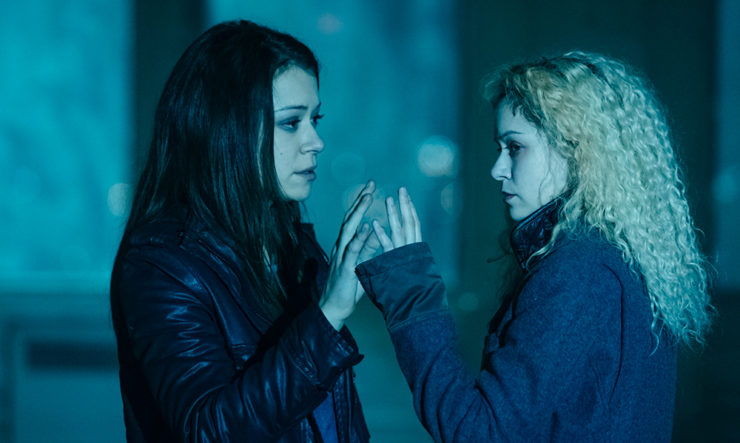Whether you’ve got a replica, a doppelgänger, or a straight-up clone, having a duplicate of some sort certainly helps you move through life a little bit easier, from a temporary stand-in to a more permanent kind of donor. But they have to know how to successfully emulate their source material, right? Which means that you probably have to train them up. Here are a few of those times that training your duplicate (knowingly or unintentionally, closely or indirectly) came in handy…
Battlestar Galactica’s Cylons

When your entire society is made up of only 12 models, the average Cylon is bound to run into dozens of others with their face, if not their identical personality. The Number Six and Number Eight models in particular find that they range from sweet to savage, empathetic to humanity’s struggle or fervently worshipping the Cylon cause. To manage these disparate personas, each number’s class includes senior figures who help shape “younger” models, from the rebirth nurses who assist the resurrected Caprica-Six to “overseer” Sixes who orchestrate the human/Cylon breeding between Sharon/Athena and Helo Agathon.
Speaking of the Number Eights—if they didn’t look alike, Athena and Boomer could be entirely different people. Their run-ins have tended more toward body-swapping than mutual help; however, when Athena arrives on a rebel basestar later in the series, she encounters a group of Eights who beg her to lead a mutiny against the cruel Sixes. Instead of letting them blindly follow her, she delivers her one and only crucial lesson: to choose a side for themselves.
Portrait Training in Harry Potter
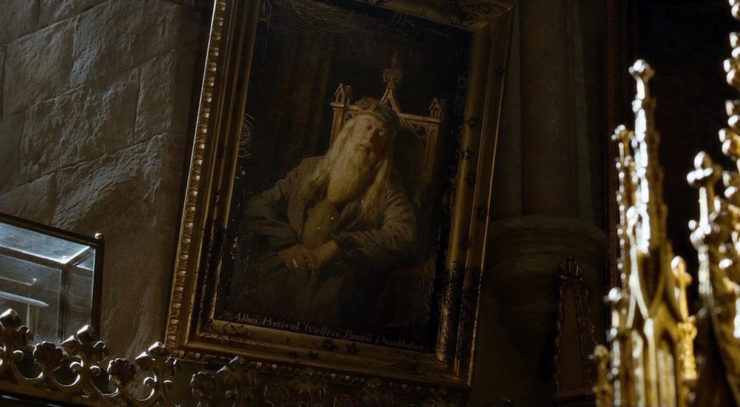
According to J.K. Rowling, the portraits we see in Harry Potter aren’t imbued with characteristics of a living person the moment their painting is complete. In order for a portrait to act like it’s subject, it has to be “trained”, even given certain information if you expect it to hide secrets. This is true of all the portraits of former headmasters in the Headmaster’s Office at Hogwarts—each new portrait is painted while the current headmaster/mistress is in office, and they keep their portraits out of sight, but close enough on hand for it to learn from them. By the time each headmaster retires, their portrait is all trained and ready to dispense wisdom to the new headmaster. Or a desperate Harry Potter, if you’re the portrait of Albus Dumbledore (and don’t pretend to be asleep, Albus, that’s just rude).
Data and Lal
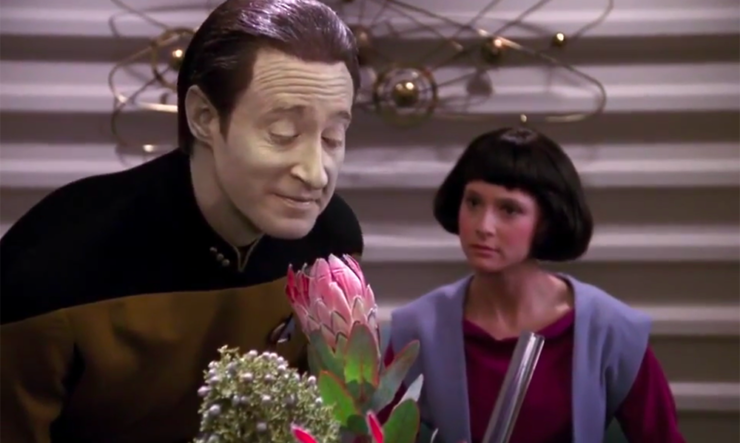
Data is a sort of duplicate of his own creator, Noonian Soong, who based all of his androids on his own physical person. But Data was able to develop on his own, separate from his human parents, being discovered apparently “abandoned” at the Omicron Theta colony by Starfleet. Becoming an officer of Starfleet and valued member of the Enterprise crew, Data eventually makes the choice to create his own “child”, as it were, in the form of Lal. She’s not an exact replica—in fact, she’s quite a bit more advanced than Data is in a number of way, and develops the ability to feel emotions before him—but she is trained according to Data’s personal desire to be more human. When Lal is about to be separated from Data by Vice Admiral Haftel, the emotional burden proves to be too much for Lal, and she suffers from neural net cascade failure. It’s possible that if Data had created Lal to be a bit more similar to him, she might have more easily survived.
Molly Southbourne and the mollys

From her first lost tooth, Molly Southbourne learned to always fear when she bled. Fear, and then react—as each drop of blood created a duplicate molly (which she intentionally thinks of in the lowercase), Molly trains so that she can be ready to murder her doppelgängers at a moment’s notice no matter the situation, from scraping her knee to losing her virginity. An unnamed prisoner hears this grisly origin story in Tade Thompson’s The Murders of Molly Southbourne, as a grim Molly recounts her many kills and her discoveries about just how deadly the mollys—and Molly herself—are. But she’s not just talking to hear herself speak; by the end of the novella, the prisoner comes to realize that she too is a molly, except she’s the first molly who hasn’t wanted to murder her predecessor on sight… and Molly doesn’t know why. The best way Molly can sum up her training is to cite a fictional epigraph from one Theophilus Roshodan:
With each failure, each insult, each wound to the psyche, we are created anew. This new self is who we must battle each day or face extinction of the spirit.
Whether it’s nature or nurture, something about the circumstances of her imprisonment has shaped this twelfth molly into something entirely different. And now she’ll spend the sequel, The Survival of Molly Southbourne, figuring out why.
Buy the Book


The Survival of Molly Southbourne
The Doctor and “Hand” Ten

How much the Doctor “trained” his duplicate—created by an excess of Artron energy and his severed hand following the Tenth’s Doctor near-regeneration experience at the hands… plunger… of a Dalek—is debatable, but his memories and desires translate over well enough for “Hand Ten”, as he was often called, to know precisely what the Doctor wanted when he was given the opportunity to stay on an alternate dimension version of Earth with Rose Tyler. The two Doctors are so in snyc that Hand Ten immediately understands what the Tenth Doctor is hoping he’ll do—tell the woman they both adore that he has a human life to share with her, along with those three little words she’s been desperate to hear, given freely. The other Doctor gets the chance to have what no Doctor has ever experienced before: a life on the slower path with someone he loves. It’s probable that Rose’s Doctor develops his own little oddities and quirks (he’s already got some of Donna Noble’s essence built right in), but his ability to be the Tenth Doctor so exactingly is what makes him so perfect for Pete’s World.
Carers in Never Let Me Go
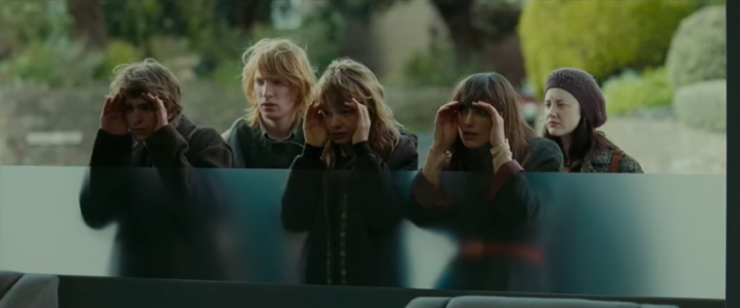
Kazuo Ishiguro’s quiet novel (which was adapted into a film in 2010) is all the more disturbing for how placidly it lays out its premise: Kathy, Tommy, and Ruth—three friends in a love triangle, who came of age at boarding school together—discover that their sole purpose is to provide organ donations to the people who cloned them. They never actually meet their “possibles,” aside from one point where Ruth thinks she’s tracked down her older predecessor; this only enhances their existential crisis, if they can’t even confront the reason behind their short lifespans. The “training” herein takes on two parts: boarding school adolescence, in which the clones are encouraged to paint and discouraged from smoking, keeping their bodies and souls “pure”; and caring. That’s the name for a potential career path for clones like Kathy, who look after their fellow clones who have donated once, twice, three times, and are nearing “completion” of their life’s purpose. Ishiguro’s writing matches this feeling of inevitability… that is, until the clones hear the rumor that they can defer their donations, if they can prove they’re in love.
Lincoln and Tom in The Island
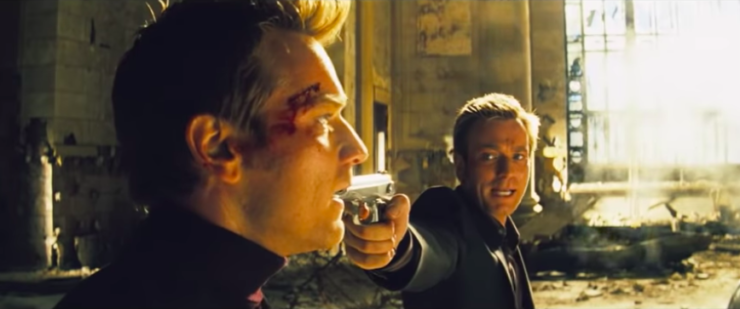
Released the same year that Never Let Me Go was published, Michael Bay’s surprisingly nuanced thriller also tackles the ethical dilemma of clones-as-organ-harvesters; but in this case, the truth is kept from them. Instead, Lincoln Six Echo and Jordan Two Delta believe that they are part of humanity’s last surviving enclave, protected from the supposedly inhospitable world inside a compound where all they do is eat well, work out, indulge their artistic sides, and hope that they win the lottery for “The Island”—a paradise free from contagion. It’s an idyllic existence—until Lincoln discovers that “going to The Island” is a euphemism for donating essential organs to your sponsors, whether they’re comatose or alcoholics, or even serving as a surrogate mother for a sponsor who can’t conceive. While Lincoln has spent his short lifespan being primed to be the perfect specimen, the real training is when he comes face-to-face with his brash, hard-partying, Scottish sponsor Tom—and then has to learn enough about him to fool the assassin after them in a classic “no, he’s the clone!” shootout scenario.
Moon
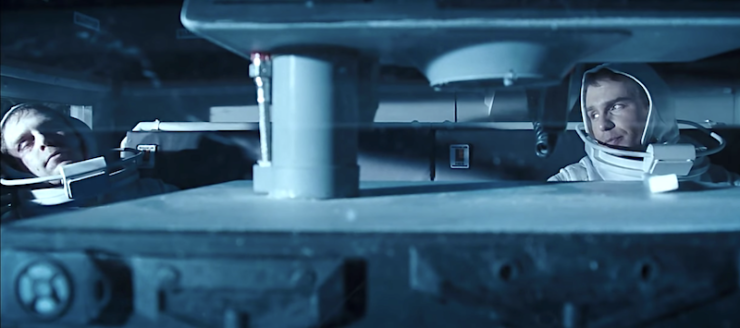
In Duncan Jones’ Moon, the protagonist doesn’t create his own clone, but he does have to work with him to foil a dastardly plan. Sam Bell thinks he’s coming to the end of a three-year lunar assignment, eagerly anticipating heading back to Earth to reunite with his wife and baby daughter. When he’s in a frightening accident during a routine EVA, he’s grateful to wake up back in the base. But—how did he make it back? He investigates the accident site, only to find himself, barely clinging to life. This is kind of a shitty way to learn that you’re a clone. The two Sams quickly realize that they’re only the latest in a long line of Sams, and, even worse, that they’ve only been designed to live for three years. Which means Older Sam only has a few days left to teach Younger Sam everything he’s learned, figure out a way to send Younger Sam back to Earth, evade the prying eyes of their bosses, and work out a plan to expose the horrific truth of the lunar colony, to ensure that no Sam Bell has to go through this again.
MEM by Bethany C. Morrow
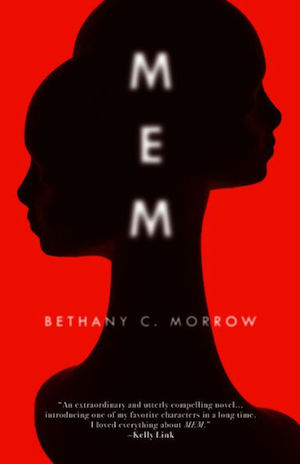
In an alternate 1920s Montreal, the practice of memory extraction has been developed to the point that traumatic memories can be removed from people and processed into “mems” living people, who breath and eat, but have no true sentience. These duplicates are not “trained” so much as “locked away and forgotten”—the whole point of them is to free their “sources” from the weight of the past, as they relive and react to the memories they were born from. But then we meet “Dolores Extract #1” who seems to have a consciousness of her own, and a will, not to mention a passion for movies. (In fact, she’s rejected her given title and taken a new name, Elsie, from a favorite film character.) Rather than accepting any training from humans, Elsie is determined to educate herself, and find a way to live a life apart from her creators.
Buy the Book


MEM
Bobby Wheelock (The Boys from Brazil) and Algernop Krieger (Archer)
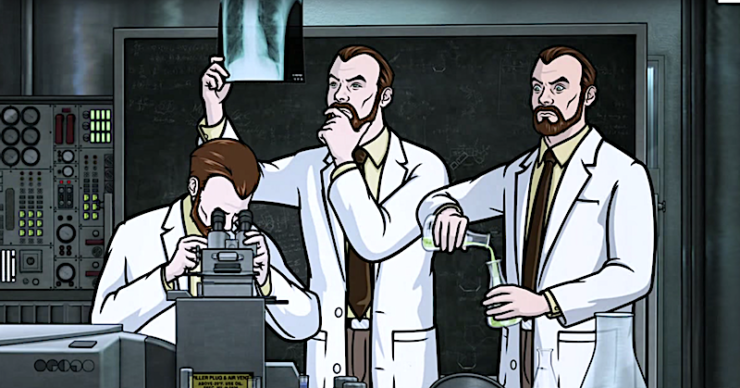
This next batch of clones aren’t technically trained to do anything. But they would have been, if a couple of horrifying plots had come to fruition. In The Boys from Brazil, iconic ’70s thriller writer Ira Levin used historical fact to create a terrifyingly loony conspiracy theory. Nazi hunter Yakov Liebermann receives a phone call from Brazil and is tipped off to a series of mysterious murders, and soon learns that former SS operatives have been activated to kill 94 men—all of them 65-year-old civil servants, each with a 13-year-old son. The reason? Well, the men’s sons are all clones of Adolph Hitler, and Mengele is hoping that if he recreates the exact narrative of the Fuhrer’s life, one of the boys will recreate history. (That’s the loony part. Mengele really did flee to South America, there were real Nazi-hunters, and obviously there are still plenty of Nazis walking among us, looking just like you or me.) Liebermann ends up battling Mengele himself for one of the cloned boys Bobby Wheelock, but luckily Bobby rejects Mengele and sets the family attack dogs on him. (See? Loony. But this is a far better ending than in real life, where Mengele simply drowned rather than dying in agony as animals tore him apart.) We also don’t see the training in Archer‘s parody of the book, but we can infer that it happened. Dr. Krieger, the mad scientist responsible for both cybernetic advancements and pig hybrids (and the sole authority of Fort Kickass) spends two seasons insisting that he’s not a Hitler clone—“If I was a clone of Adolf goddamn Hitler, wouldn’t I look like Adolf goddamn Hitler?”—carefully not mentioning that he was raised in Brazil by a Nazi scientist, and only came to the U.S. after his pack of Dobermans ate the man who might have been his father. But in Season 5 the gang visits a Central American dictator and discovers the man has three Krieger clones, who are all working together to launch a nerve gas attack on New York, and have clearly been trained in a level of organized evil that our Krieger never achieved. Original Krieger fights them, three Kriegers are killed, and the one that’s left insists he’s Original Krieger.
But isn’t that exactly what a clone would want you to think?
Orphan Black’s Clone Club
Two words for you: CLONE. SWAP. Adaptability must be a strong gene among Project Leda, because Sarah and her sestras have a remarkable penchant for getting mistaken for one another and then having to lean into that. The clones aren’t so much trained as baptized by fire, like in the pilot when Sarah has to fool Beth’s boyfriend after a mere few hours of even learning her doppelgänger exists (it says a lot about both of them that she succeeds); Cosima as Alison, in which she accidentally “outs” herself as queer to the PTA; anytime Helena barely manages to play a cartoonish, and usually murderous, version of one of her sestras; and our personal favorite, Sarah-as-Rachel interrogating Alison-as-Sarah. Except in rare cases where they have enough warning to prep one another, the clones usually just have to wing it, based on whatever mannerisms and quirks they’ve picked up simply by spending time together. It’s the best sort of training in that it’s more organic, and speaks volumes about the depth of their various relationships.










